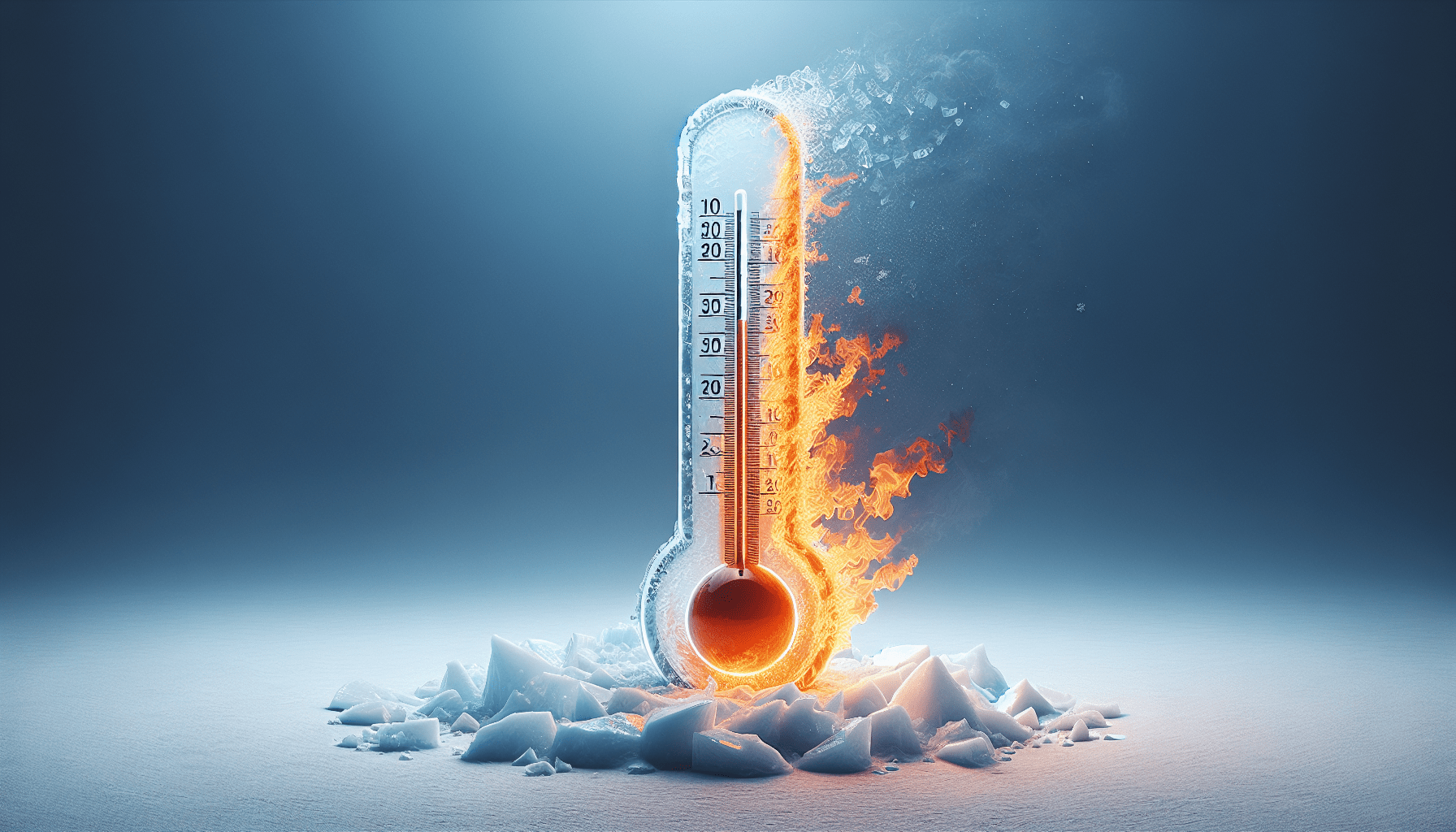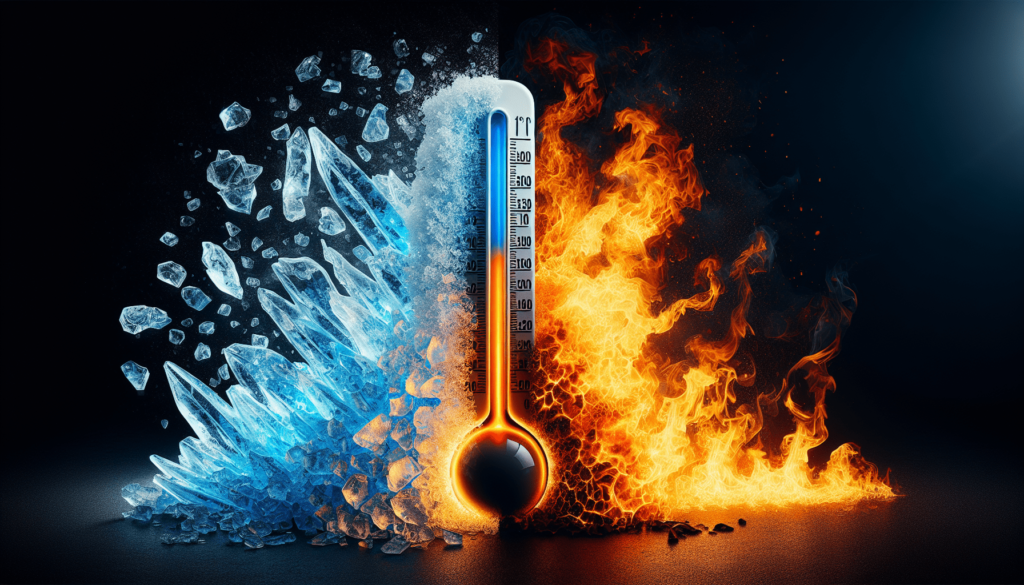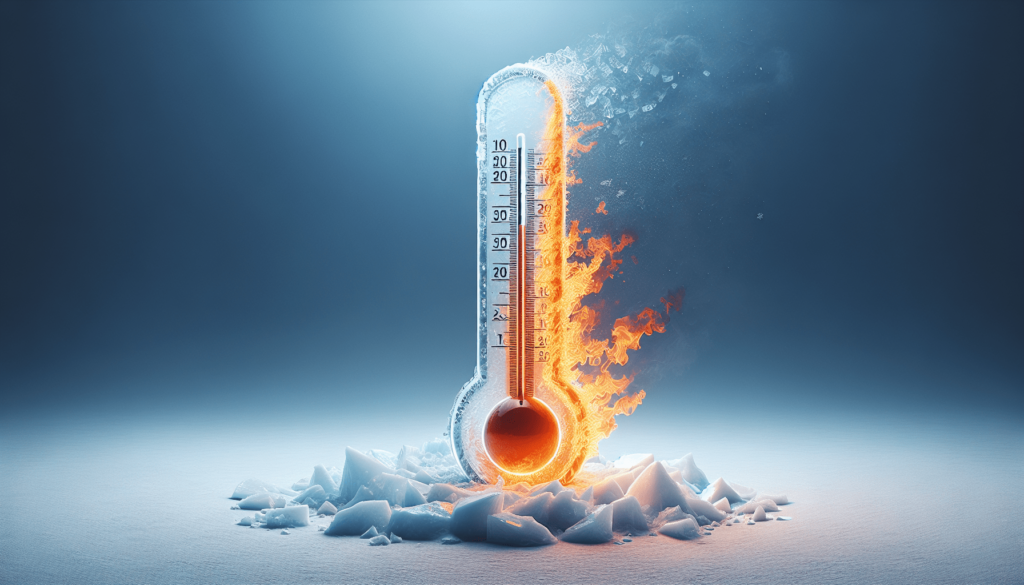
Can you believe that cold, not heat, is the real silent killer for Americans? Many people might assume that scorching summer days pose the greatest risk, but it’s actually those chilly winter months that have been proven to be more deadly. In our article “What Kills More Americans, Heat Or Cold?” we delve into surprising statistics and expert insights to uncover how and why colder weather claims more lives. You’ll discover the unexpected ways cold impacts health and learn essential tips to stay safe year-round. Have you ever wondered what poses a greater risk to your health, extreme heat or extreme cold? It’s a topic that elicits much debate and sometimes surprising conclusions. When we consider the impacts of climate on our daily lives, understanding which of the two extreme conditions is more hazardous can help you better prepare and protect yourself. Let’s dive into this discussion and uncover some compelling insights.
The Immediate Threats: Heat and Cold Explained
Both excessive heat and biting cold present immediate dangers to your well-being. While they operate differently, their potential to harm you is significant and demands a close examination.
Heat: How It Affects Your Body
Extreme heat can disrupt your bodily functions. When temperatures soar, your body works hard to maintain an optimal internal temperature. This effort, if prolonged or severe enough, can lead to heat-related illnesses.
Symptoms of Heat-related Illnesses:
| Illness | Symptoms |
|---|---|
| Heat Cramps | Muscle pains, heavy sweating, fatigue |
| Heat Exhaustion | Weakness, nausea, dizziness, headache |
| Heatstroke | High body temperature, confusion, unconsciousness |
Cold: Its Impact on Your Health
Cold weather, on the other hand, forces your body to work overtime to keep warm. This effort can lead to significant physiological stress and hazardous conditions like hypothermia and frostbite.
Symptoms of Cold-related Illnesses:
| Illness | Symptoms |
|---|---|
| Frostbite | Numbness, pale or cold skin, blistering |
| Hypothermia | Shivering, confusion, slurred speech, drowsiness |
| Cold Stress | Increased heart rate, muscle cramps, exhaustion |
The Numbers: What Statistics Reveal
While understanding the symptoms is crucial, numbers provide a clear picture of what affects more Americans. Let’s dig into the statistics to determine which extreme weather condition is more deadly.
Deaths Due to Heat
Heatwave Details
Over recent years, the frequency of heatwaves has increased, amplifying health risks. A 2014 report from the National Weather Service highlighted the significance of heat-related mortality.
Heat-related Fatalities Data:
| Year | Deaths due to Heat |
|---|---|
| 2005 | 846 |
| 2010 | 1371 |
| 2015 | 1370 |
| 2020 | 1072 |
Heatwaves lead to power outages, dehydration, and exacerbate chronic conditions—all of which can be fatal.
Deaths Due to Cold
Chilling Insights
Cold, despite its subtler imposition compared to heatwaves, can be equally deadly. Hypothermia and cardiovascular strain contribute significantly to fatalities.
Cold-related Fatalities Data:
| Year | Deaths due to Cold |
|---|---|
| 2005 | 680 |
| 2010 | 820 |
| 2015 | 881 |
| 2020 | 780 |
Many cold-related deaths occur indoors, where inadequate heating can create an equally dangerous environment.

Vulnerable Populations: Who is Most at Risk?
Certain groups within the population are more susceptible to extreme temperatures. Knowing who these groups are can help you take extra precautions if you or your loved ones fit into one of these categories.
Susceptibility to Heat
Older adults, particularly those aged 65 and over, are highly vulnerable to heat due to the physiological changes that come with aging. Additionally, individuals with pre-existing medical conditions, such as diabetes or heart disease, face heightened risks.
Populations at Risk:
| Group | Why They Are At Risk |
|---|---|
| Elderly | Less efficient body temperature regulation |
| Children | Higher metabolic rate, less fluid reserve |
| Chronically Ill | Medication side effects, compromised systems |
Susceptibility to Cold
Similar to extreme heat, the elderly again are at high risk during cold weather. However, homeless individuals, those with limited access to heating, and individuals with cardiovascular conditions also face significant risks.
Populations at Risk:
| Group | Why They Are At Risk |
|---|---|
| Elderly | Less body fat, diminished circulation |
| Homeless | Constant exposure, lack of proper shelter |
| Infants | Larger skin surface area in proportion to weight |
Geographic Variability: How Location Influences Risk
Depending on where you live, the risk of succumbing to extreme temperatures varies. Geography plays a crucial role in determining what poses a greater threat to you.
Urban vs. Rural Risks
Urban environments often exacerbate heat-related dangers due to the “urban heat island” effect, where buildings and pavement retain heat. Conversely, rural areas with sparse populations may face emergency response challenges in cold weather.
Geographic Influence:
| Environment | Greater Risk | Factors Influencing Risk |
|---|---|---|
| Urban | Heat | Heat retention, population density |
| Rural | Cold | Isolation, slower emergency response |
Regional Climate Differences
Regions vary significantly in their typical climate patterns. For instance, Southern states like Arizona and Texas are more prone to heat waves, while Northern states like Minnesota and Montana experience severe cold snaps.
Regional Differences:
| Region | Typical Climate Extremes | Typical Seasonal Hazards |
|---|---|---|
| South | Extreme Heat | Heatwaves, drought |
| North | Extreme Cold | Blizzards, ice storms |

Preventative Measures: How to Stay Safe
Knowing the risks is only half the battle. The real test is how well-prepared you are to handle extreme weather conditions. Let’s explore both general and specific measures you can take to stay safe.
Preventive Measures for Heat
Hydration and Clothing
Staying hydrated is crucial during extreme heat. Drinking water often, even if you’re not thirsty, helps regulate your body temperature. Wearing light, loose-fitting clothing also assists in maintaining a comfortable body condition.
Tips to Beat the Heat:
| Preventive Action | Benefits |
|---|---|
| Drink Water Regularly | Prevents dehydration, regulates temperature |
| Wear Loose Clothing | Allows better air circulation, keeps cool |
| Stay Indoors During Peak Hours | Reduces exposure to extreme heat |
Home Cooling Strategies
Effective home cooling involves methods beyond just air conditioning, such as using fans and keeping blinds closed to block out direct sunlight.
Home Cooling Tips:
| Strategy | Advantages |
|---|---|
| Use Fans | Improves air circulation, reduces heat |
| Block Sunlight | Keeps indoor spaces cooler |
| Utilize Cool Rooms | Provides temporary relief from heatwave |
Preventive Measures for Cold
Layering and Heating
Layering clothes can trap heat effectively. Utilizing home heating systems wisely can ensure that you remain warm without running up your energy bills exorbitantly.
Tips to Combat the Cold:
| Preventive Action | Benefits |
|---|---|
| Layer Clothing | Traps body heat, reduces exposure |
| Efficient Heating | Keeps home warm, balances energy usage |
| Warm Bedding | Ensures heat retention during sleep |
Emergency Preparedness
Having an emergency kit with essentials like non-perishable food, water, and medical supplies can be a lifesaver during sudden cold spells or power outages.
Emergency Kit Essentials:
| Item | Importance |
|---|---|
| Non-perishable Food | Sustains nutrition in prolonged conditions |
| Warm Blankets | Provides heat in case of power outage |
| Flashlights and Batteries | Ensures visibility and safety |
Climate Change: Adding Fuel to the Fire
The ongoing issues of climate change further complicate the scenario. Not only are summers getting hotter, but winters can also become unpredictable, causing both heat and cold risks to escalate.
Increased Heatwaves
Climate change is leading to more frequent and intense heatwaves. According to NOAA, each of the past five years has been among the warmest on record.
Unpredictable Winters
While overall temperatures are rising, winters still pose severe risks. Polar vortex events, where cold Arctic air rushes south, can cause sudden, extreme cold spells even in typically warmer areas.
Impacts of Climate Change:
| Weather Pattern Change | Potential Hazards |
|---|---|
| More Frequent Heatwaves | Increased risk of heat-related illnesses |
| Intense Cold Snaps | Higher risk of hypothermia and frostbite |
Policy and Community Actions: Steps for a Safer Environment
While personal precautions are crucial, community and policy-level actions play a vital role in reducing the deadly impacts of extreme weather.
Government Initiatives
Governments can implement heat and cold wave action plans, like public cooling centers or heating subsidies, to protect the most vulnerable populations.
Examples of Effective Actions:
| Initiative | Benefits |
|---|---|
| Public Cooling Centers | Provide relief during extreme heat |
| Heating Subsidies | Ensure warmer homes for low-income families |
Community Involvement
Community involvement can include volunteer programs that check on the elderly during extreme weather and initiatives to plant trees, which can provide natural cooling.
Community Action Ideas:
| Initiative | Benefits |
|---|---|
| Volunteer Check-ins | Ensure vulnerable individuals are safe |
| Tree Planting Drives | Reduce urban heat, improve air quality |
Conclusion: What Should You Be More Concerned About?
Both extreme heat and cold pose significant health risks. However, statistics suggest heat tends to cause more fatalities annually compared to cold. Yet, your risk can vary based on your location, your health, and your access to resources.
By understanding these risks, taking preventive measures, and advocating for effective community and governmental support, you can better navigate the challenges posed by extreme temperatures. Stay safe, stay informed, and take the necessary steps to protect yourself and those around you from the impacts of both extreme heat and cold.
